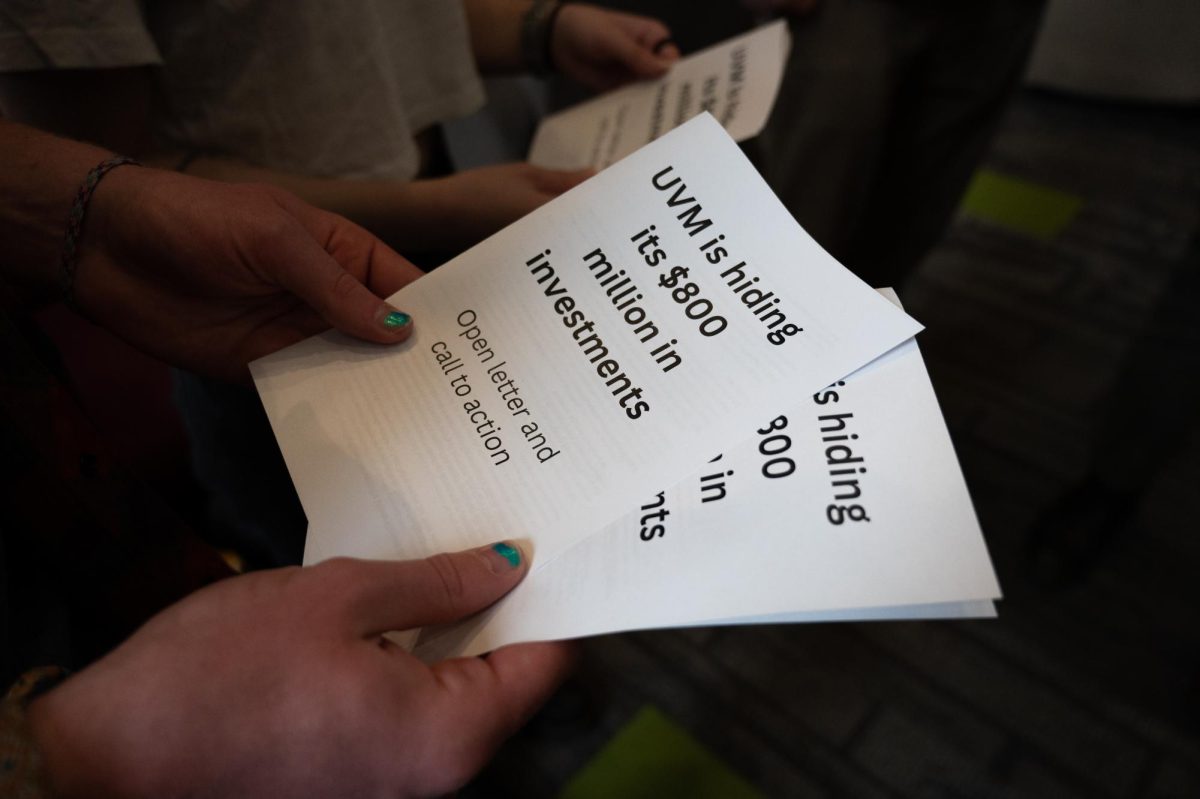SGA passed the Clean Energy Fund (CEF) unanimously at their meeting on Tuesday night.
The CEF, which charges students a nominal fee between $5 and $10 dollars and puts it towards purchasing renewable energy, has been instated at well over fifty schools across the nation, including Harvard University and University of Colorado at Boulder.
The fund was organized at UVM by the University of Vermont Campus Energy Group (UVM-CEG). The group’s hard work has paid off, as both the undergraduate and the graduate student senates have passed the CEF.
“The next step is getting it approved with the Board of Trustees,” Nikola Janjic, pres-ident of UVM-CEG said.
Through the fund “the university can live up to its mission to be the environmental university,” said sophomore Daniel Belhumeur, vice president of UVM-CEG.
According to a letter about the fund written by the group there are numerous environmental, economic and academic advantages to the fund.
The letter states that “environmentally, it will reduce UVM’s ‘carbon footprint’ and harmful emissions of greenhouse gases. Economically it will protect the University from increasingly rising and volatile costs of conventional energy [T]he on-campus and community-wide renewable energy projects will expand academic opportunities for UVM students across the business, science, environmental and engineering curricula.”
“This is also something that is profitable and can work from an economic standpoint,” Belhumeur said.
“The economic savings from these student supported renewable energy projects could then be earmarked to be monitored and you could dedicate that funding to go back into supporting student initiatives or lowering tuition or going toward scholarships. We should have the right to decide how some of these savings could best be spent,” Janjic said.
The student fee would collectively bring in up to $200,000, and that does not include the potential donations from outside sources.
“We’ve already been contacted by a number of what I like to call ‘benevolent insti-tutions’ that have expressed interest in supporting clean energy development at UVM. Companies from all over the country have been contacting us about exciting ways that we can develop sustainable energy at UVM.
It’s important that student established and a lot of community leaders in this region will be attracted to that and will support this fund and this initiative,” Janjic said.
The money would go towards different sources of renewable energy, from an anaerobic digester (a system that turns animal waste into power and electricity) to solar and wind projects, according to UVM CEG’s presentation to SGA.
UVM spends over six million dollars annually on energy. Renewable energy sources purchased through the CEF could drastically reduce the university’s energy costs, Janjic said.
A recent survey shows that UVM students are in strong support of the CEF. In a study of over 750 students, only 8 percent of those polled did not support a student fee.
“It’s great that students have voiced so loudly their concern with climate change and that they are going the extra step to ensure sustainability,” Janjic said. The CEF “is actually going to go towards making the entire world a better place.”
















